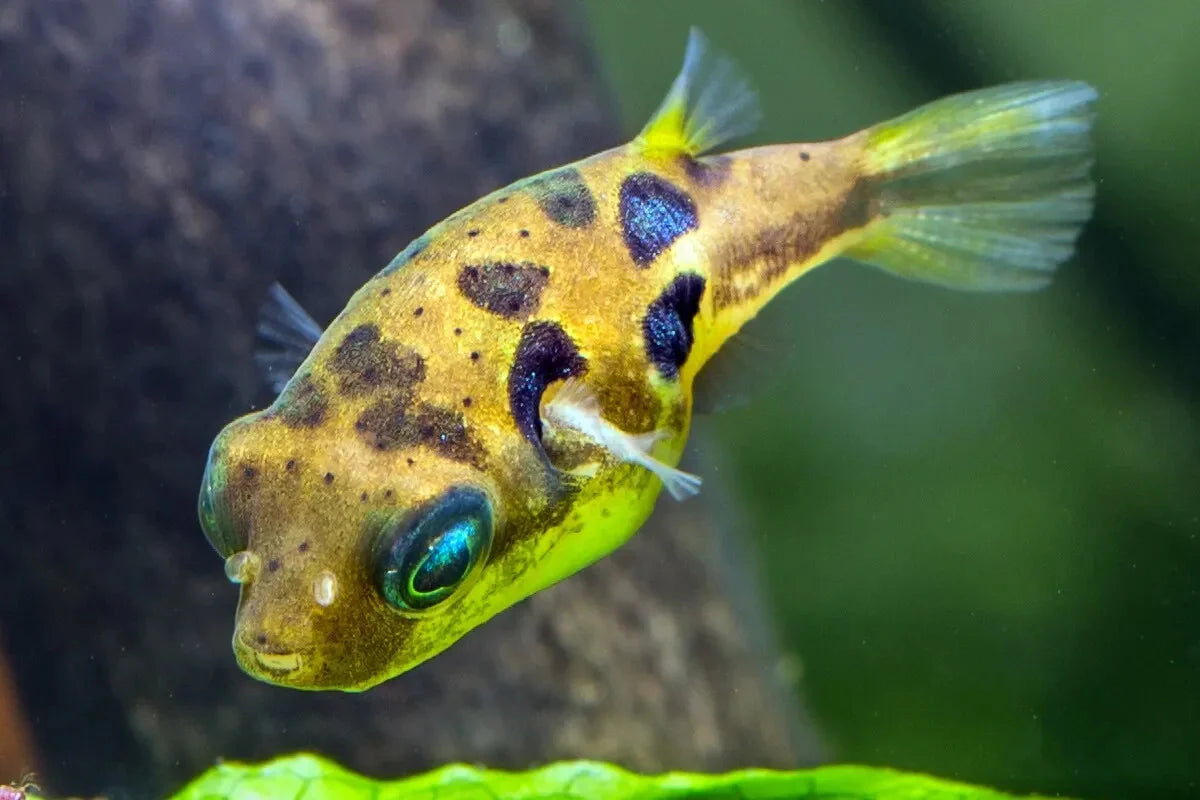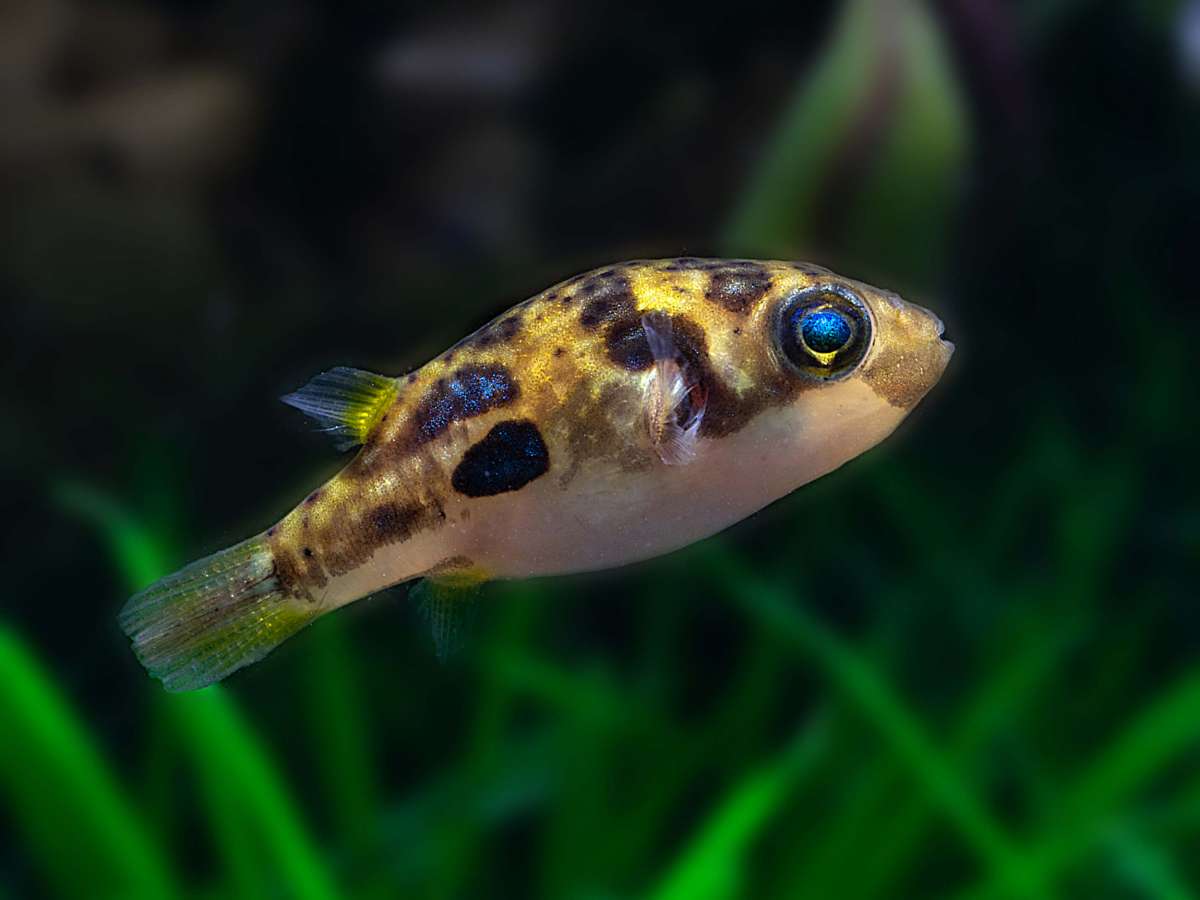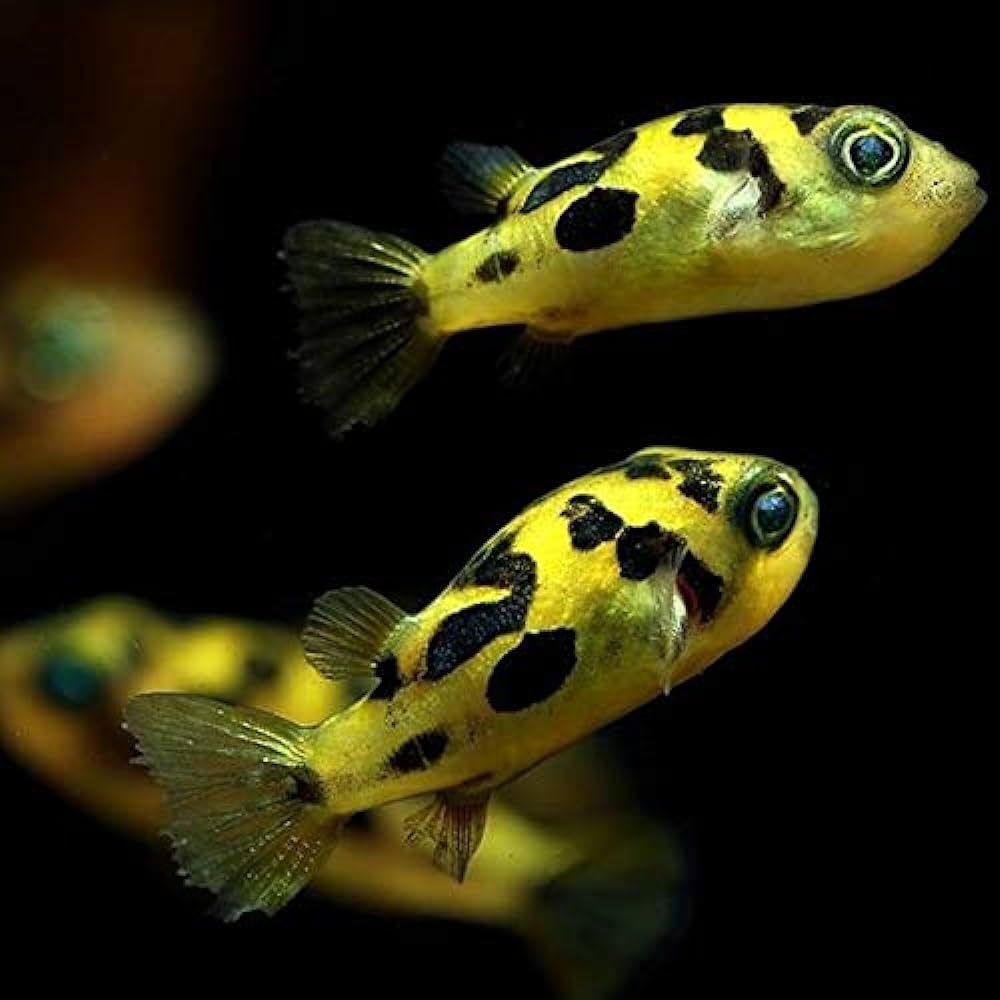Indian Dwarf Pea Puffer (Carinotetraodon travancoricus) - Live Fish
Indian Dwarf Pea Puffer (Carinotetraodon travancoricus) - Live Fish
The Indian Dwarf Puffer (Carinotetraodon travancoricus) is a small, freshwater species of pufferfish native to India and Sri Lanka. Known for its compact size and unique personality, the Indian Dwarf Puffer has become a popular choice for aquarium hobbyists. Here are the key details about this species:
1. Appearance
- Size: This species is very small, with adults typically growing to 1 inch (2.5 cm) in length, making them one of the smallest pufferfish species.
- Coloration: Indian Dwarf Puffers have a yellowish or greenish body with distinct black markings. These markings can appear as spots or vertical stripes along the body, and they may vary among individuals.
- Fins: The fins are transparent, and they have a round, almost puffed-up shape when threatened or excited, which is characteristic of pufferfish in general.
2. Habitat
- Native Range: The Indian Dwarf Puffer is found in slow-moving freshwater streams and rivers in the western Ghats of India and parts of Sri Lanka.
- Water Parameters: They prefer slightly acidic to neutral water (pH 6.5–7.5) and temperatures between 75°F and 79°F (24°C–26°C). Soft to moderately hard water is ideal.
3. Behavior and Temperament
- Aggressive Nature: While small, Indian Dwarf Puffers are territorial and sometimes aggressive toward other fish, particularly other males of their species. It's recommended to keep only one male per tank, and to provide plenty of hiding places.
- Solitary or Paired: These puffers are often best kept singly or in a small group of females with a single male to prevent aggression. They can also be kept in pairs if properly managed.
- Personality: They are very active and curious, often exploring their environment. While they may puff up when threatened, they generally have a bold and feisty personality.
4. Diet
- Carnivorous: Indian Dwarf Puffers are carnivores and have a diet that primarily consists of live or frozen foods, such as bloodworms, brine shrimp, and snails. They are particularly known for their ability to crush the shells of snails with their specialized beak-like teeth.
- Feeding in Captivity: In an aquarium, it's essential to provide them with a varied diet, as they may not thrive on flake or pellet food alone. They benefit from foods like small invertebrates and the occasional vegetable matter.
5. Breeding
- Egg Layer: Indian Dwarf Puffers are egg layers, and breeding in captivity can be a challenge due to their territorial nature. If breeding is successful, the female lays eggs on plants or other surfaces. The eggs hatch in a few days, and the fry are very small.
- Tank Setup for Breeding: To encourage breeding, provide plenty of hiding places, plants, and a quiet, stable environment. The male will guard the eggs and the female.
6. Care Requirements
- Tank Size: Due to their small size, Indian Dwarf Puffers don’t need a very large tank, but they require a well-maintained aquarium. A 5- to 10-gallon tank is suitable for a single puffer or a small group of females. Larger tanks are better if keeping multiple fish.
- Tankmates: Indian Dwarf Puffers are not community fish in the traditional sense, as they can be aggressive. They should be kept with other small, peaceful species. Avoid keeping them with larger or fast-moving fish, as they might be harassed. Good tankmates include small rasboras, shrimp, and snails (which they may feed on).
7. Lifespan
- With proper care, Indian Dwarf Puffers can live for 4 to 5 years.
8. Aquarium Setup
- These puffers appreciate a well-planted tank with hiding spots like rocks, caves, and dense vegetation. The setup should have areas of gentle water movement, as they are found in calm, slow-moving waters in the wild.
9. Unique Features
- Puffer Mechanism: Like other puffers, when threatened, the Indian Dwarf Puffer can inflate its body by gulping water (or air), making it appear larger as a defense mechanism. However, they do not need to puff up frequently, and it should not be stressed into inflating regularly.
The Indian Dwarf Puffer is a fascinating and beautiful fish but requires a careful approach to its care, especially when considering its territorial nature. With the right environment, diet, and tankmates, it can be an enjoyable and low-maintenance fish for aquarists, particularly those with smaller tanks or those interested in keeping a species that can thrive alone or in small groups.
Product features
Product features
Materials and care
Materials and care
Merchandising tips
Merchandising tips
Share








